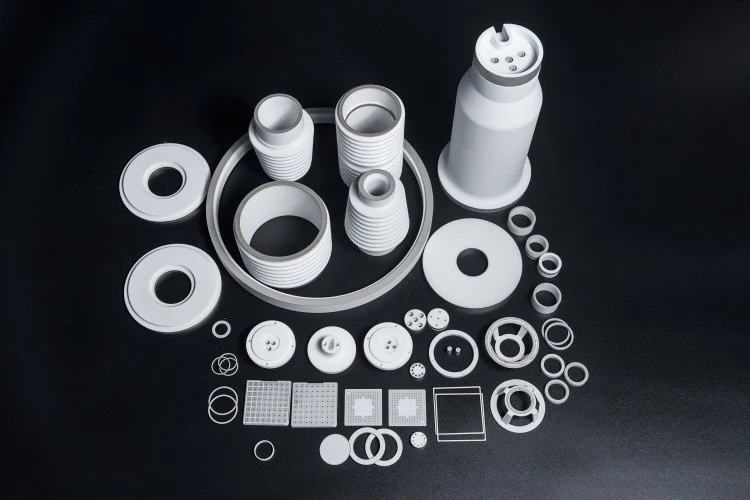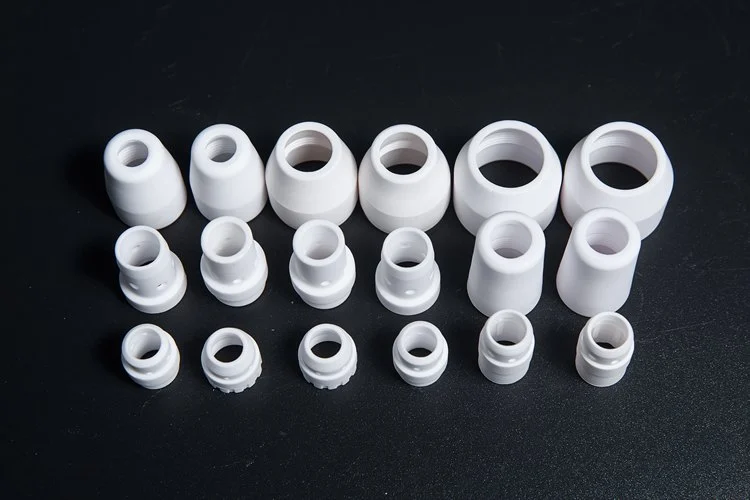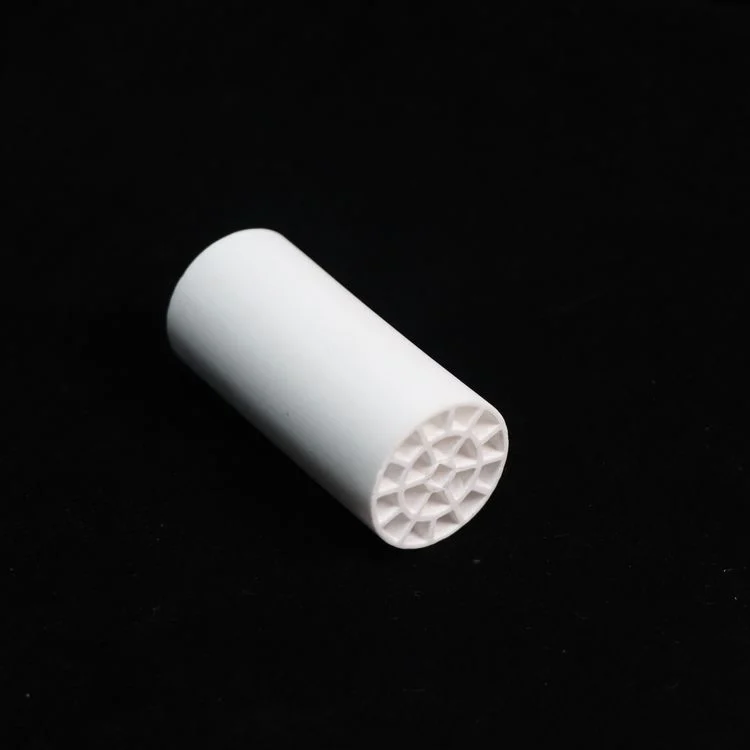Introduction to Alumina Ceramic Materials
Alumina ceramics are industrial oxide ceramics composed of aluminum oxide (Al₂O₃). Different series of alumina materials can be produced based on the percentage of Al₂O₃ content and the type of additives used. Classified by Al₂O₃ content, grades include 75%, 85%, 95%, and 99%. Based on crystalline phase differences, types encompass mullite, corundum-mullite, and pure corundum. By introducing diverse additives and employing appropriate production techniques, alumina ceramics can be manufactured in various sizes and shapes.

Alumina ceramics are typically produced from bauxite and can be shaped through multiple processing methods. Injection molding, compression molding, isostatic pressing, slip casting, diamond machining, and extrusion are all applicable techniques for manufacturing alumina ceramics. Similar to other important engineering materials like aluminum nitride, alumina can be fabricated via dry pressing followed by sintering or hot pressing with appropriate additives.
Properties of Alumina Ceramic Materials
Alumina ceramics exhibit outstanding corrosion resistance, exceptional mechanical strength, and excellent electrical insulation properties, making them one of the most widely used ceramics in structural, wear, and corrosive environments.
1. Electrical Insulation: Alumina ceramics possess superior electrical insulation capabilities, capable of withstanding extremely high currents. Their electrical resistance increases with higher purity, making them suitable for circuit boards, insulators, electronic packaging, and similar applications.
2. Mechanical Strength: Aluminum oxide ceramics exhibit exceptional hardness and strength, demonstrating outstanding wear resistance and durability. They are commonly used in abrasive environments, such as cutting tools, bearings, and wear-resistant components.
3. Chemical Inertness: Aluminum oxide ceramics are chemically inert and corrosion-resistant, making them suitable for corrosive chemical environments. Applications include chemical processing equipment, laboratory apparatus, and corrosion-resistant coatings.
4. High-Temperature Resistance: Aluminum oxide ceramics possess outstanding thermal stability, enabling them to withstand extreme temperatures without compromising structural integrity. This characteristic makes them ideal for furnace linings, heating elements, and crucible applications.

Applications of Aluminum Oxide Ceramic Materials
1. Biomedical Applications: In healthcare, alumina ceramics are used for dental implants, prosthetic joints, and surgical instruments due to their biocompatibility, wear resistance, and inertness.
2. Electronics and Semiconductor Industry: Alumina ceramics serve as substrates for electronic components like integrated circuits, sensors, and microelectronics, owing to their thermal conductivity, electrical insulation, and compatibility with semiconductor processes.
3. Automotive Components: Aluminum oxide ceramics are utilized in automotive engineering for spark plug insulators, catalytic converter substrates, and sensors due to their thermal stability, mechanical strength, and resistance to thermal shock.
4. Aerospace Applications: Aluminum oxide ceramics play a critical role in aerospace technology. Their lightweight properties, heat resistance, and mechanical robustness make them suitable for rocket components, thermal barriers, and heat shields.

Production Process Flow for Aluminum Oxide Ceramic Materials
The production process for alumina ceramics varies depending on the specific application and required properties of the final product. The general process typically involves the following steps:
1. Powder Preparation: Production usually begins with preparing alumina powder through various methods such as precipitation, sol-gel, or mechanical grinding.
2. Shaping: The prepared alumina powder is then formed into the desired shape using techniques like pressing, casting, or extrusion, depending on the complexity of the final product.
3. Sintering: The formed alumina components undergo sintering, where they are heated to high temperatures in a controlled atmosphere to fuse the particles, forming a dense ceramic structure.
4. Finishing: After sintering, the alumina ceramics may undergo additional processing such as machining, grinding, or polishing to achieve the required dimensions, surface finish, and precision.
Norke’s product range includes specialized ceramic materials, including Alumina Ceramic. These products find extensive applications across various high-end industries, including electronics, machinery, chemicals, metallurgy, new energy, and semiconductors.
